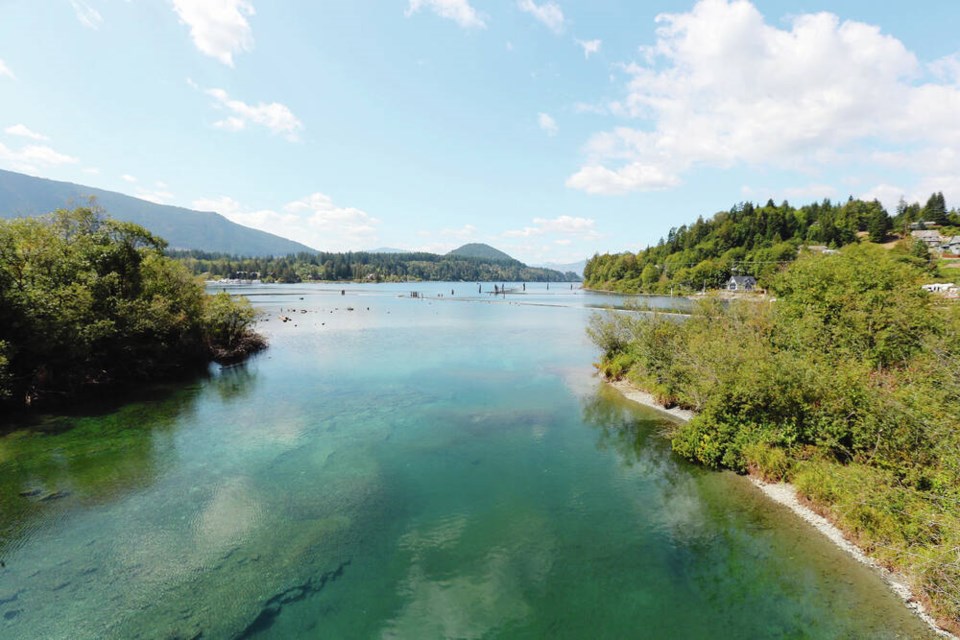Plans to raise the 1950s-era weir at Cowichan Lake to provide reliable river water flows to protect salmon got a boost with word that the province is providing another $14 million for the project.
A new weir is sorely needed to support sustainable water flow in the Cowichan River, as evidenced by a massive fish die-off last July and the need for electric pumps to keep minimum river flows, the Cowichan Tribes First Nation, Cowichan Valley Regional District and the Cowichan Watershed Board said in a joint statement.
The money from the province, announced last week in the 2024 budget, will be added to $24 million earlier provided to Cowichan Tribes through the federal disaster mitigation and adaptation fund.
The federal money includes support for a new weir as well as for an overall Cowichan River resilience project.
Besides supporting salmon and other aquatic life, the Cowichan has heritage river status in Canada and is popular for fishing, swimming and rafting.
Its water flows also sustain operations at the pulp mill in Crofton owned by Paper Excellence, which has held the water licence for the weir for nearly 10 years.
But the river has been plagued by low water levels, threatening young salmon and other life. Huge pumps were brought in last year, as in previous years, to carry water from the lake to the river.
Joe Saysell, who has lived on the river for more than 70 years, sounded the alarm in July when bodies of young salmon and trout were found by swimmers in the river. He estimated at the time that many thousands of fish had died.
The current weir was built to store enough water so Cowichan River flows could be sustained throughout the dry season.
Built of concrete at the head of the river, the weir, which includes a boat lock and several spill gates, controls seasonal water-level fluctuations but does not exceed natural high-water levels so shorelines and riparian habitats remain intact.
Calls to raise the weir go back more than 25 years.
The province and the river partners developed a Cowichan water-use plan in 2018, resulting in a recommendation that the 97-centimetre weir be raised by another 70 centimetres. Engineering and design work was completed in 2022.
A new weir will not only increase storage capacity but improve how water storage is managed in the early season, the joint statement said.
More water would be captured in early spring and released through the dry summer and fall months, it said, “improving the health of aquatic habitat for fish and vegetation as well as supporting ongoing recreation and economic development.”
Storing more water will result in fewer extreme low-water episodes and reduce the need to pump water out of the lake to support base river flows, proponents say.
Tom Rutherford, strategic priorities director for the Cowichan Watershed Board, called a collaboration that puts water for salmon first, with Cowichan Tribes “in the driver’s seat” and governments working together in a “different, and better, approach to doing things.”
The project is critical to sustain wild Pacific salmon populations, regional economies and constitutionally protected Indigenous rights, he said.
Xtli’li ye’ Lydia Hwitsum, Cowichan Tribes chief and co-chair of the watershed board, said that a higher weir, allowing more water storage in the lake, is essential to the river’s health.
“We look forward to the next steps with the province in advancing liability protection and a collaborative approach to water governance that respects Cowichan Tribes inherent rights.”
>>> To comment on this article, write a letter to the editor: [email protected]




